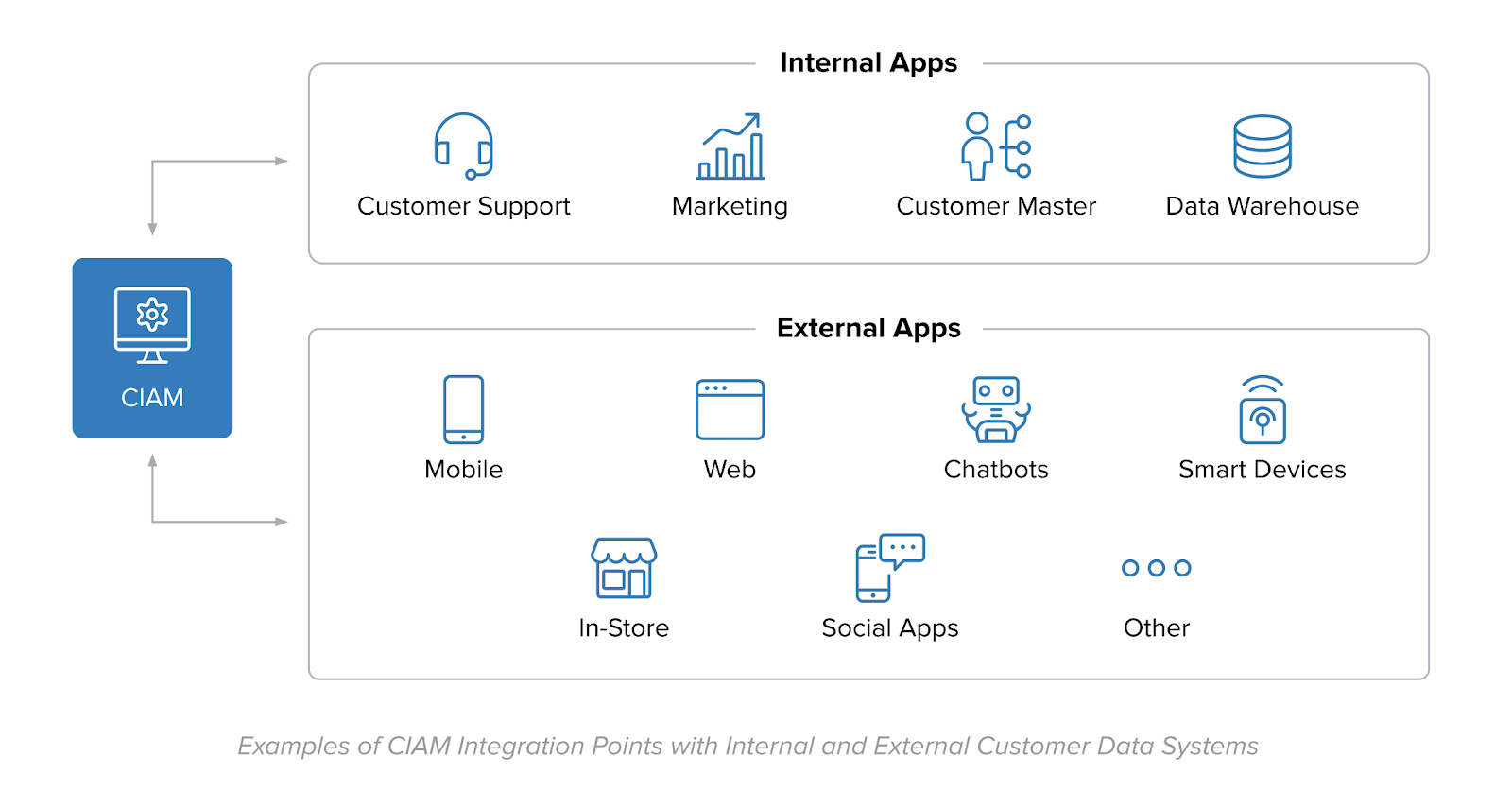It’s not realistic to tackle every aspect of your omni-channel vision in one fell swoop. Take the time to plan out a strategy that makes sense for your organization and build a foundation upon which you can construct new ways to engage customers over time. The following steps can help you break down barriers and elevate your omni-channel CX with a modern CIAM solution:
1. Map out potential omni-channel journeys. Most B2C businesses support some form of omni-channel (or at least multi-channel) today. Review your current customer journey and think about how you can improve and integrate interactions across any channel a consumer might visit. It’s important to look beyond the obvious digital and in-store transactions to identify future touchpoints where you can deliver a more seamless experience.
2. Uncover technical debt across your stack. It’s likely that you store customer identities and activity data in several places (such as multiple CRM or e-commerce applications for different brands). Typically, some of these systems are built on legacy architectures that make them difficult to integrate with. Plug those into a unified identity layer, so you can establish a single, less rigid source of truth about each customer. Once all customer identities are in one place, you’ll be able to more easily connect profiles and data across disparate systems.
3. Replace disjointed legacy directories with cloud CIAM. Of course, it’s not just legacy apps you’re dealing with. Many IT and development teams have cobbled together separate identity directories or user profile databases as they’ve undergone mergers and acquisitions, or rolled out new systems. Unfortunately, since most of these were built for yesterday’s applications, they aren’t flexible enough to meet omni-channel requirements. Yet building, securing, and scaling home-grown registration and login capabilities for every customer system takes your resources away from innovation. To stay on top of the ever-evolving technology, there are commercial CIAM vendors for whom this task is their sole focus.
4. Bring it all together for a consistent gatekeeper of customer data. Marry a modern CIAM platform that captures who the consumer is with your CRM or e-commerce system of record that tracks what the consumer did. Once you have this connective tissue in place, you can use CIAM to link all of the other digital components, data sources, and channels that touch customers. This will provide a complete 360-degree lens.

5. Provide frictionless security. Once in place, CIAM should enhance your overall CX by giving customers a single login across all online and mobile applications. With the latest access management innovations (such as passwordless authentication), you’ll be able to minimize the user inputs required during authentication, which makes it easier for consumers to connect with your brand. Effective CIAM also increases customer trust by preventing data leakage and fraud. Finally, you can further bolster your identity store by adding best-in-class tools to manage advanced requirements surrounding data discovery and consent management, record deduplication, and orchestration.
6. Increase developer efficiency. Instead of continuously building, maintaining, and updating custom code that connects siloed identity stores, your developers should be focused on core product components and on accelerating new omni-channel strategies. This will allow your business to find more ways to equip brand ambassadors with information about customers’ in-store, mobile, and online engagement to customize interactions at the point of sale. The opportunities to eliminate extra steps, shorten wait times, reduce frustration, and speed product delivery are infinite when you have accurate, comprehensive customer data at your fingertips.
MGM Resorts loyalty and rewards program, M life, provides individualized service to millions of patrons every day, starting from the moment they walk through the doors. They use CIAM to centralize identity and connect the various experiences M life customers enjoy. Additionally, CIAM helps the company better scale to meet user demands, protect sensitive patron data, and keep loyalty points secure.
“Everything we do is about delivering a personalized experience, and the cornerstone of that is identity management. We need to make sure we understand who each person is and know the data we have about them is right, because that creates a more inspiring experience for the people who come and visit our properties. Pretty much all day used to be consumed with potential security threats, but CIAM gives us the ability to manage identity well for millions.”
— Scott Howitt, Chief Information Security Officer, MGM
Unlocking the benefits of customer identity and access management
An effective omni-channel approach hinges on knowing who your consumer is, no matter which channel they choose to engage through. Unified identity data is the lynchpin that unlocks personalized experiences and makes it easier to support seamless interactions everywhere. In doing so, CIAM helps businesses increase customer satisfaction, retention, and lifetime value, as well as grow revenues. Modern identity platforms also free up development resources for more value-add work, which speeds time-to-market while helping you avoid high-profile security breaches.
By choosing CIAM to meet the needs in an omni-channel world, you’ll gain groundbreaking functionality that supports all kinds of unique security requirements and channel complexity, so you can focus on enriching and enhancing your end-to-end CX.



